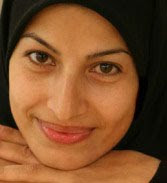The Behesht-e Zahra, to the south of Tehran, is perhaps the largest among the cemeteries of Iran. It got its name – Zahra’s paradise – after Fatima, fourth daughter of Mohammad and wife of the holy caliph of the Shiites Ali, as she is called az-Zahra, “the Shining”. Here lay some of the main leaders of the Islamic Republic, beginning with Ayatollah Khomeini who on his return to Iran after the revolution delivered his historical speech on 1 February 1979 in this cemetery. Here lay many of the one million Iranian soldiers who fell in the eight years old Iraq-Iranian war. And here lay also the twenty-six years old Neda, shot dead a year ago on 20 June during the manifestations in Tehran. The cemetery is daily visited by several people from the sixteen million inhabitants of Tehran.
A multilane highway leads from the city to the cemetery. Along the highway, in summer and in winter, there stand the little flower sellers called “the children of the paradise”, hoping they would succeed in selling till night for 5000 tomans (about 3 USD) all the flower they purchased on the market in the dawn for 3000 tomans (about 2 USD). The difference means the livelihood of whole families here, in the poorest neighborhoods of Tehran.
Nevertheless, Mansure Motamedi on her photo series made on the flower sellers does not highlight the obvious misery, but rather the beauty and joy which permeates even the hard lives of these children. Similarly to the beautiful film by Majid Majidi, which also presents the children living in the poor southern neighborhoods of Tehran, and even with its title reminds the little flower sellers of Zahra’s paradise: The children of heaven.












A multilane highway leads from the city to the cemetery. Along the highway, in summer and in winter, there stand the little flower sellers called “the children of the paradise”, hoping they would succeed in selling till night for 5000 tomans (about 3 USD) all the flower they purchased on the market in the dawn for 3000 tomans (about 2 USD). The difference means the livelihood of whole families here, in the poorest neighborhoods of Tehran.
Nevertheless, Mansure Motamedi on her photo series made on the flower sellers does not highlight the obvious misery, but rather the beauty and joy which permeates even the hard lives of these children. Similarly to the beautiful film by Majid Majidi, which also presents the children living in the poor southern neighborhoods of Tehran, and even with its title reminds the little flower sellers of Zahra’s paradise: The children of heaven.

No hay comentarios:
Publicar un comentario